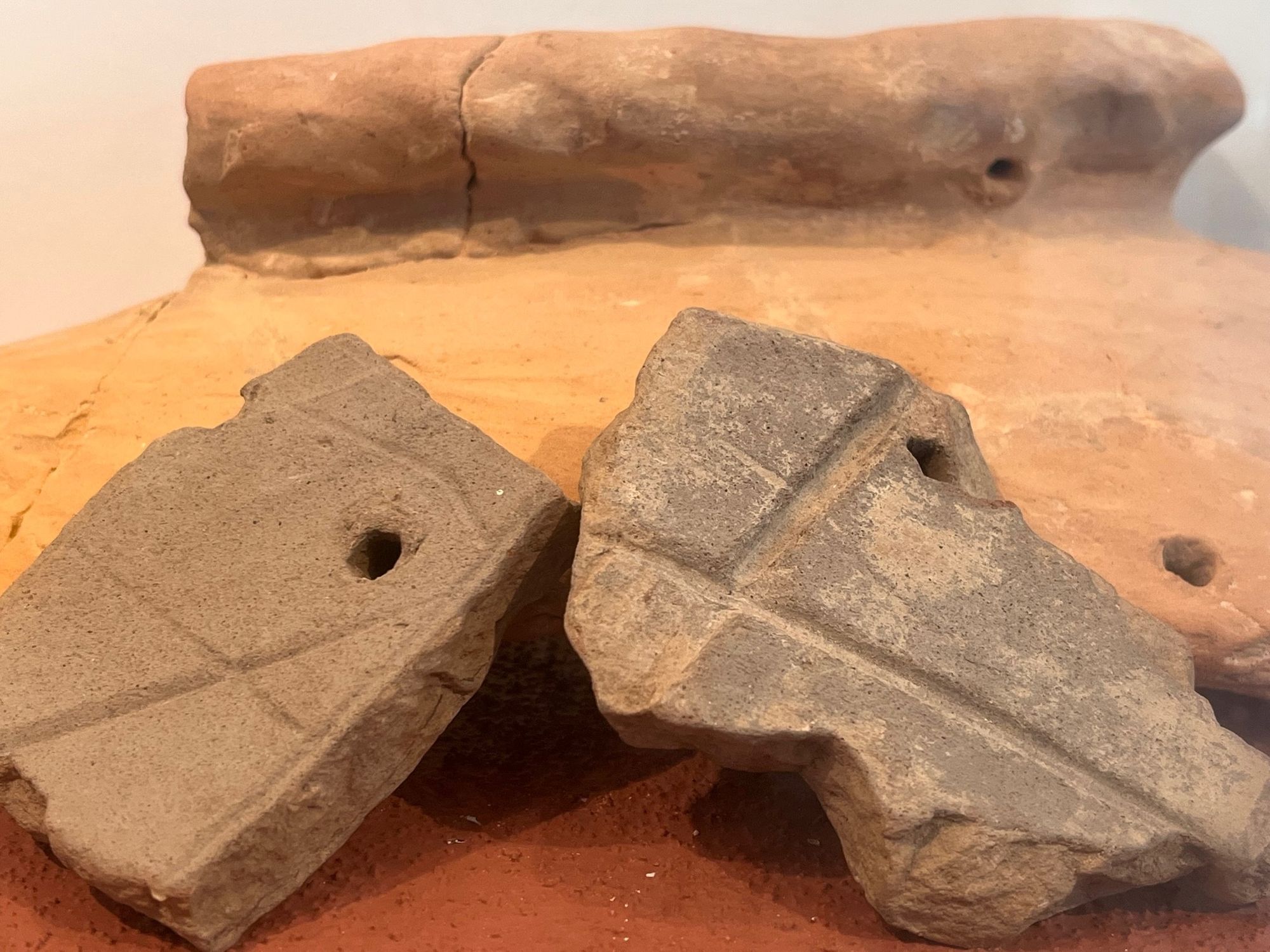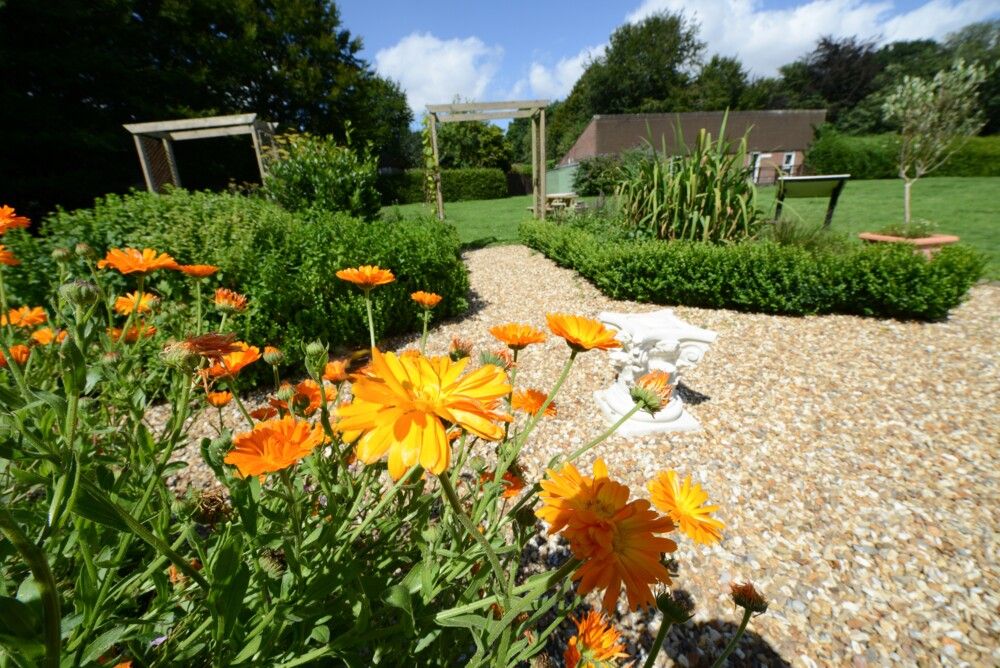Before we had chocolate and sugar, honey was the main source of something sweet in the ancient world. Honey was used extensively in cooking. In savoury dishes, honey was spread over meat or on fish to get rid of the oily taste. Honey made delicious cakes and was added to wine to sweeten the flavour. At Rockbourne Roman Villa this Easter we have hidden bees, instead of the usual chocolate eggs!
On display at our onsite museum, we have pottery fragments with mysterious holes and grooves. One interpretation is a Roman beehive. The small holes allow the bees in and out of the hive, and the grooves help the bees attach their honeycomb. This object was the inspiration behind our bee hunt.

One of the best surviving written works from the Roman period was by Columella. His book De re rustica (On Rural Affairs) was written in the first century AD. This book is a major source of evidence about Roman farming and one chapter is nearly wholly devoted to beekeeping.
Columella recommends the most suitable place for a beehive is somewhere sheltered against storms, with no grazing cattle. The beehive itself should be positioned far away from the noise of the farm. He goes on to list many plants that are good “feeding ground for bees”, from small clumps of thyme and marjoram to fruit trees. Columella observed that uncultivated land produces wildflowers “much loved by bees”.
Romans did care about the welfare of their bees. Here's a quote from the man himself about why the hive should be placed on the bottom of the valley:
“The empty bees, when they go forth to feed, may be able more easily to fly up to the higher ground, and also, when they have collected what they require, they may fly with their burden on a down-hill course without any difficulty.”

Since the discovery, specialists have expressed doubt about our beehive. According to Columella, they are unsuitable as beehives because they are “burnt by the heat of the summers and frozen by the winters cold”. Roman food specialist Joan Alcock mentioned experiments done at Butser Ancient Farm confirmed bees do not survive in pottery hives over winter. The question is – if our beehive is not a beehive, what are the holes and grooves used for?
This article was written by Wade Jones, Visitor Services Assistant at Rockbourne Roman Villa




